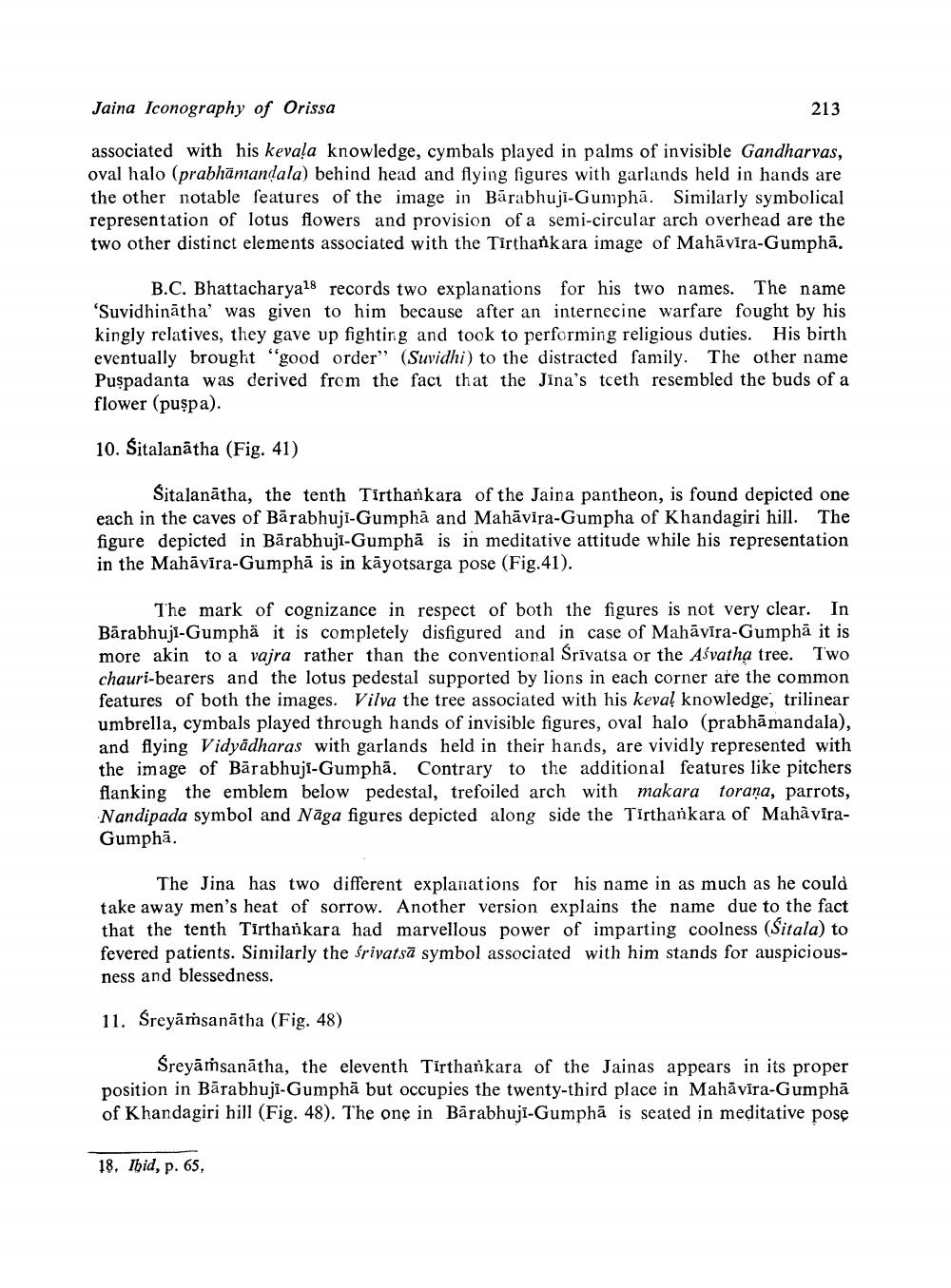________________
Jaina Iconography of Orissa
213
associated with his kevala knowledge, cymbals played in palms of invisible Gandharvas, oval halo (prabhāmandala) behind head and flying figures with garlands held in hands are the other notable features of the image in Bārabhuji-Gumphā. Similarly symbolical representation of lotus flowers and provision of a semi-circular arch overhead are the two other distinct elements associated with the Tirthankara image of Mahāvīra-Gumphā.
B.C. Bhattacharya18 records two explanations for his two names. The name Suvidhinātha' was given to him because after an internecine warfare fought by his kingly relatives, they gave up fighting and took to performing religious duties. His birth eventually brought "good order" (Suvidhi) to the distracted family. The other name Puşpadanta was derived from the fact that the Jina's teeth resembled the buds of a flower (puspa).
10. Sitalanātha (Fig. 41)
Sitalanātha, the tenth Tirthankara of the Jaina pantheon, is found depicted one each in the caves of Bārabhuji-Gumpha and Mahāvira-Gumpha of Khandagiri hill. The figure depicted in Bārabhuji-Gumphā is in meditative attitude while his representation in the Mahāvira-Gumphā is in kāyotsarga pose (Fig.41).
The mark of cognizance in respect of both the figures is not very clear. In Bārabhuji-Gumphä it is completely disfigured and in case of Mahāvīra-Gumphā it is more akin to a vajra rather than the conventional Srīvatsa or the Aśvatha tree. Two chauri-bearers and the lotus pedestal supported by lions in each corner are the common features of both the images. Vilva the tree associated with his keval knowledge, trilinear umbrella, cymbals played through hands of invisible figures, oval halo (prabhāmandala), and flying Vidyadharas with garlands held in their hands, are vividly represented with the image of Bārabhuji-Gumphā. Contrary to the additional features like pitchers flanking the emblem below pedestal, trefoiled arch with makara torana, parrots, Nandipada symbol and Nāga figures depicted along side the Tirthankara of MahaviraGumphā.
The Jina has two different explanations for his name in as much as he could take away men's heat of sorrow. Another version explains the name due to the fact that the tenth Tirthankara had marvellous power of imparting coolness (Sitala) to fevered patients. Similarly the śrivatsā symbol associated with him stands for auspiciousness and blessedness.
11. Sreyāmsanātha (Fig. 48)
Sreyāmsanātha, the eleventh Tirthankara of the Jainas appears in its proper position in Bārabhuji-Gumphā but occupies the twenty-third place in Mahāvīra-Gumphā of Khandagiri hill (Fig. 48). The one in Bārabhuji-Gumphā is seated in meditative pose
18. Ibid, p. 65,




